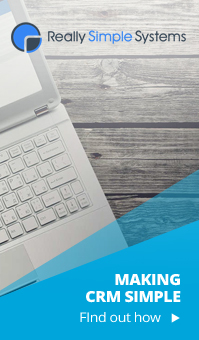
CRM for Small and Medium Businesses
The
needs for a CRM Application for a small or medium business are often just as
complicated as those for a large company. There are usually differences in a)
the number of users that need system access, b) simplified functionality and c)
less technical skills/capability/people in the business to bring the solution
to fruition.
There are six key steps for an SMB to consider.
- Review the CRM info on our site
- Review vendor shortlist
- Ensure vendors can meet your needs
- Shortlist two vendors
- Conduct and evaluation
Key things to consider at this stage include
- What are the business drivers behind the CRM Purchase (e.g. increase revenue, improve customer service)
- What functionality do you need
- Identify whether you have a preference for a cloud or on-site solution
The CRM Shortlist
In
terms of vendors, you will note that our recommendations will usually consist
of:
- Large and Profitable software companies
- Companies with a large number of customers across many industries
- Companies with an extensive range of partners and services options
This
is for important reasons:
- Choosing a CRM system is a business decision with expected system lifetime of 5-8 years
- Software companies only survive if they can grow their new customer numbers - that funds R&D for new functionality
- They are more likely to be viable and improving the products in 5 years time
Prove a Vendor meets your needs
Conduct
one-on-one meetings with these vendors/implementers to explain your company’s
needs and requirements.
Focus
on who they have as references customers in your industry and of your size.
This ensures that they understand your industry and the key areas of
functionality needed to make the solution a success. Have the vendor setup
conference calls or site visits to companies they have worked with in the past.
Shortlist two Vendors
Once
you have conducted the initial evaluation of vendors on your shortlist, you
need to cut that list down to the top two vendors. Who can your work with; who
do you trust to be with you over the long haul? (A typical CRM system may be in
place for 5-8 years.)
Although
you may have a strong preference for a vendor early in the evaluation process,
it is important to keep an open mind. In addition, it provides you some
leverage during negotiation.
Conduct an evaluation
This
is the time when vendors will need to prove that they can fulfil your CRM
needs. Review and compare how the different vendors’ applications work and map
to your internal business processes.
Draw
up a list of key attributes that you are looking for and score the vendors
against the attributes. The Implementers will often have these available and
will use them as resources to guide you through the evaluation phase.
Choose a vendor and deploy your CRM Solution
Once
you have all the information you need, you will finally be able to choose the
best CRM vendor to meet your needs.
Choose
the vendor and commit to a partnership to get the implementation right. Commit
the ‘brightest and best’ resources to the project. Give the project team
support and authority to make decisions on behalf of the company. This is the
best way to ensure a successful implementation.
Date posted: 2014-12-15 | posted by: miked
Tweet



